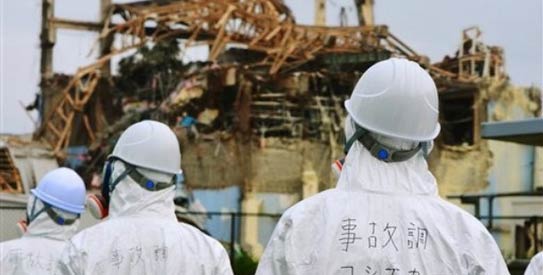
TOKYO: An improved method to remove radioactive cesium from soil may mean Japanese authorities will no longer have to strip vast amounts of dirt to clean up areas contaminated by the world’s worst nuclear disaster in 25 years, a Japanese research institute said.
Japan is faced with the task of cleaning up thousands of square kilometres of land contaminated by radiation from the Fukushima Daiichi nuclear power plant after it was crippled by a devastating earthquake and tsunami in March.
The National Institute of Advanced Industrial Science and Technology said it has improved on a method that uses an acidic solution to remove radioactive material from soil. Without this method, removing topsoil in the 12 municipalities surrounding the Daiichi plant could result in millions of tonnes of soil that needs to be disposed of or stored, it added.
“The cost to dispose of or store soil removed from Fukushima would be astronomical. Our method could cut the amount of soil that needs to be removed to one hundredth of what it would otherwise be, which also means disposal and storage costs would be slashed by the same extent,” said Tohru Kawamoto, who led the research.
Kawamoto said his group was aiming to begin cleaning up some school grounds and other places in Fukushima prefecture on an experimental basis within the next six months and that it might take another six months before its operations could be widened out throughout Fukushima.
In the new method, the acidic solution is heated to almost boiling point, after which almost all of the cesium is taken out through agents known as Prussian Blue nanoparticles, allowing the solution to be used again.
Various types of cesium, which spread from the crippled Daiichi plant, can have a half life of up to 30 years. Half life is the amount of time required for a radioactive substance to decrease by half.
“We have so far received interest from construction companies involved in the cleanup process in the affected areas and businesses that own real estate contaminated by radiation,” Kawamoto said.
Japan said last week that it aims to halve radiation over two years in places contaminated by the nuclear disaster, removing soil, plants and trees in an area spanning thousands of square kilometres. The cleanup could cost tens of billions of dollars, and thousands of evacuees may not be able to return home for years, if ever.











































Dear visitor, the comments section is undergoing an overhaul and will return soon.